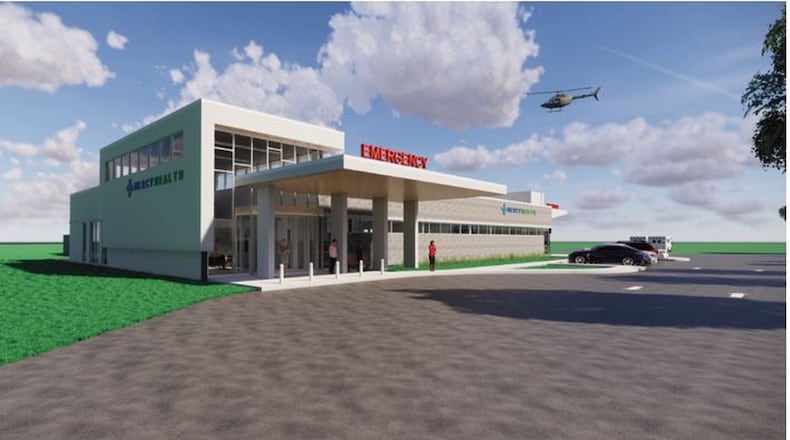MORE: Beavercreek hospital starts work on five-story tower
While still on the periphery of the Dayton area, it will be the furthest the Cincinnati-based Catholic health network has come into the area. Alex Rintoul, vice president of strategy and operations for Mercy Health-Springfield, said the site will likely draw patients from not just Enon but also surrounding communities like New Carlisle, Yellow Springs, Medway, Donnelsville and Fairborn.
The location Mercy is stretching into has for years been dominated by nonprofit hospital networks like Premier Health, Kettering Health Network and Dayton Children’s Hospital.
Mercy Health is the biggest health system in Ohio but for years has leapfrogged the Dayton area, with sites in Cincinnati and in Lima, Springfield and Toledo.
MORE: UD, Sinclair proposing combined nursing program
Rintoul said that “as far as ambitions go, who knows what the future will hold” and the health system has no specific Dayton area plans beyond what it has shared about Enon.
“Dayton is pretty well provided for in health care. But as care gets to be more complex it may make sense for us as a health system to help bridge the gap over time between our Cincinnati facilities all the way up 75 to our Toledo facilities. But that’s really more a matter of what does the community really need,” Rintoul said.
The service area that Mercy Health is expanding into is now primarily served by Mercy and Kettering Health. About 40 percent of the patients in the service area now drive to Springfield Medical Center, said Rintoul.
Kettering Health’s Huber Heights freestanding emergency center and Soin Medical Center in Beavercreek both also draw a significant number of patients, he said.
Allan Baumgarten, an insurance analyst who authors the Ohio Health Market Review, said he would hesitate to call Mercy a major health network for Dayton employers and consumers.
MORE: Former Ascend CEO to lead Dayton software startup
Even with the new campus, Mercy wouldn’t have enough of a presence that a major employer in Dayton could offer a benefit plan limited to Mercy providers, he said.
“It might give employers and their insurers a little more leverage with Premier and Kettering to say that they will use only one of those systems plus Mercy, so Premier and Kettering should be prepared to sharpen their pencils,” Baumgarten said. “The fact is that employers have the power to put pressure on provider systems, but are reluctant to upset their employees by requiring them to switch to a single provider system that offers the best pricing and quality.”
Hospital systems across Ohio have been stretching their reach and searching for new territory to draw patients. Kettering and Premier are both reaching out into the suburbs and bolstering their presence on the edge of the Cincinnati metro.
For the residents of Enon and the surrounding area, it could broaden options for hospital care.
Rob Anderson, Fairborn city manager, said he it’s good to see development happening at the city’s doorstep, which shows the region is expanding.
“It gives our residents another option for health care in this area. With Soin Medical Center opening up that certainly was good for us because it provided better access. This is just another step in that same direction,” Anderson said.
MORE: Empty beds more common in area hospitals
Anderson said closer options for emergency care also help first responders make faster trips and get back in service faster.
Scott McGohan, CEO of employee benefits firm McGohan Brabender, said he has more questions than answers on what it could mean if Mercy expands further into the market.
With Dayton’s Good Samaritan Hospital just closed, and empty beds cited by its parent Premier as one of the reasons for the closure, McGohan said he would want to know whether this will lead to lower cost of care.
McGohan said he is a fan of competition pushing companies to lower prices, but health care doesn’t always follow the same economics as other businesses.
“There’s no question we have enough capacity. The brick and mortar is abundant,” McGohan said. “I would want to understand not what but why they are building where they are building.”
About the Author

